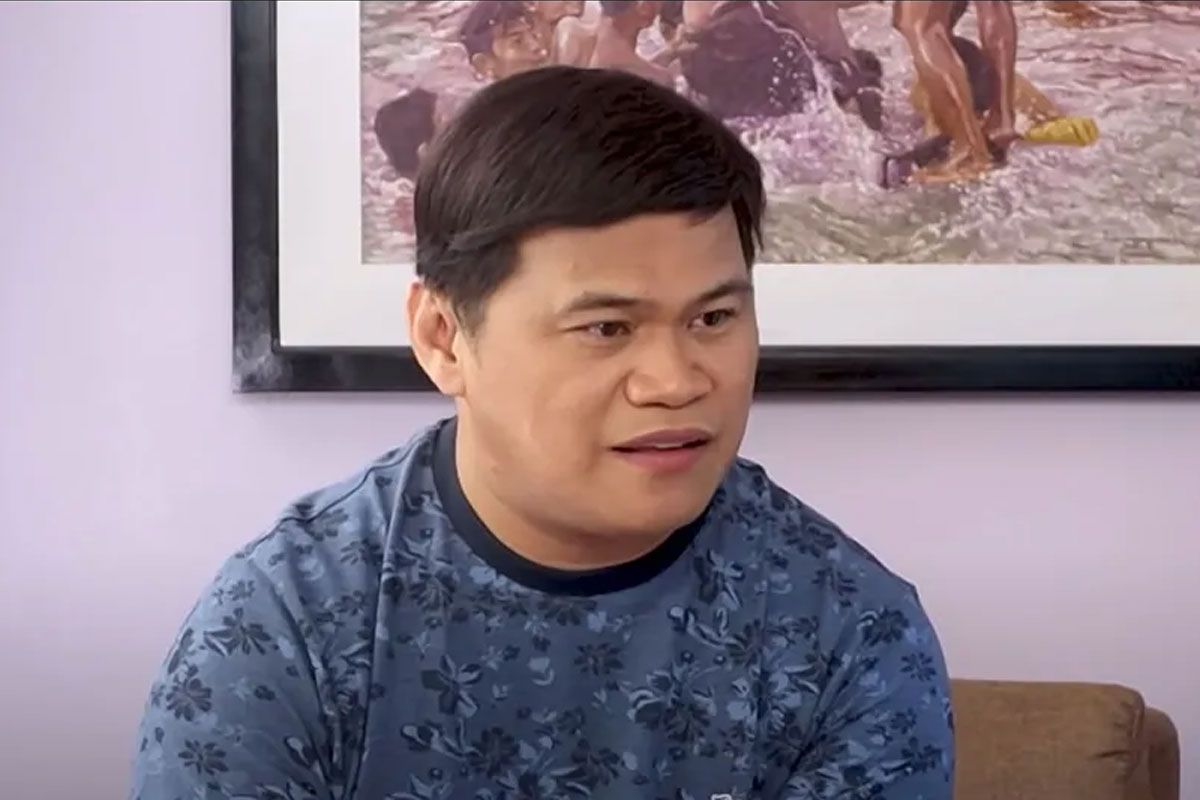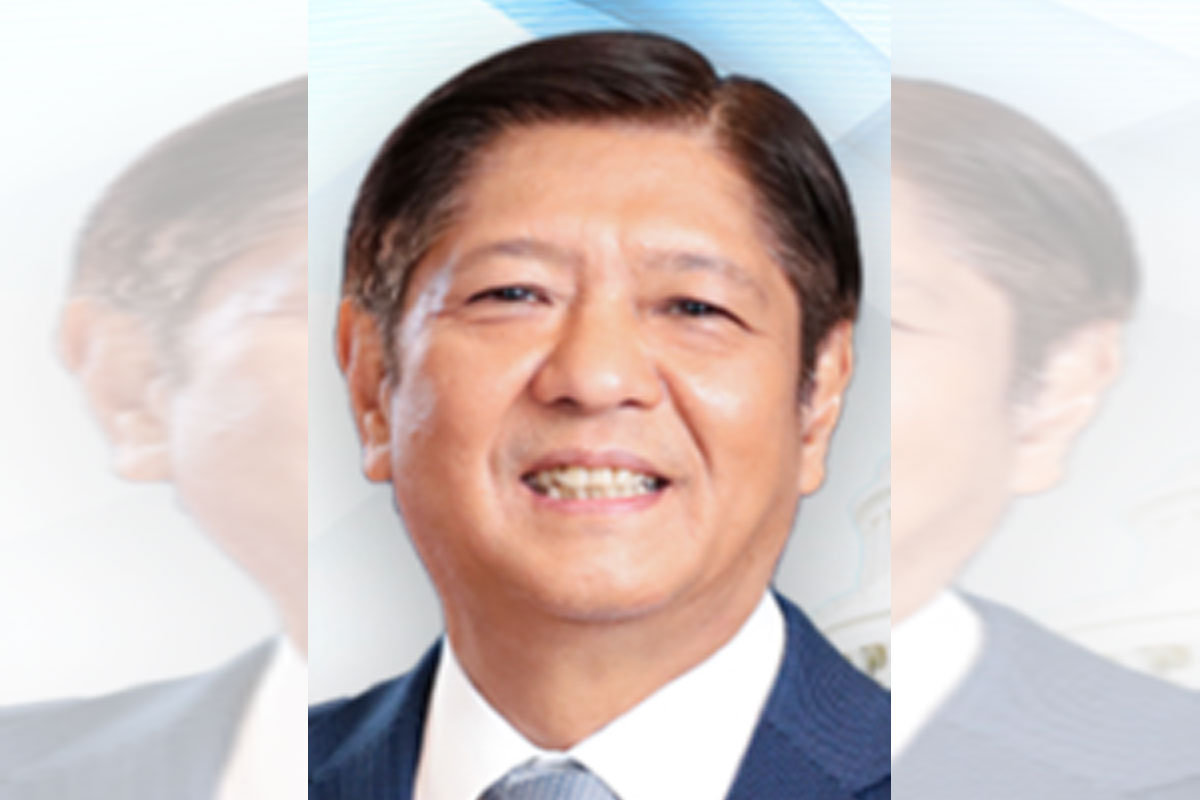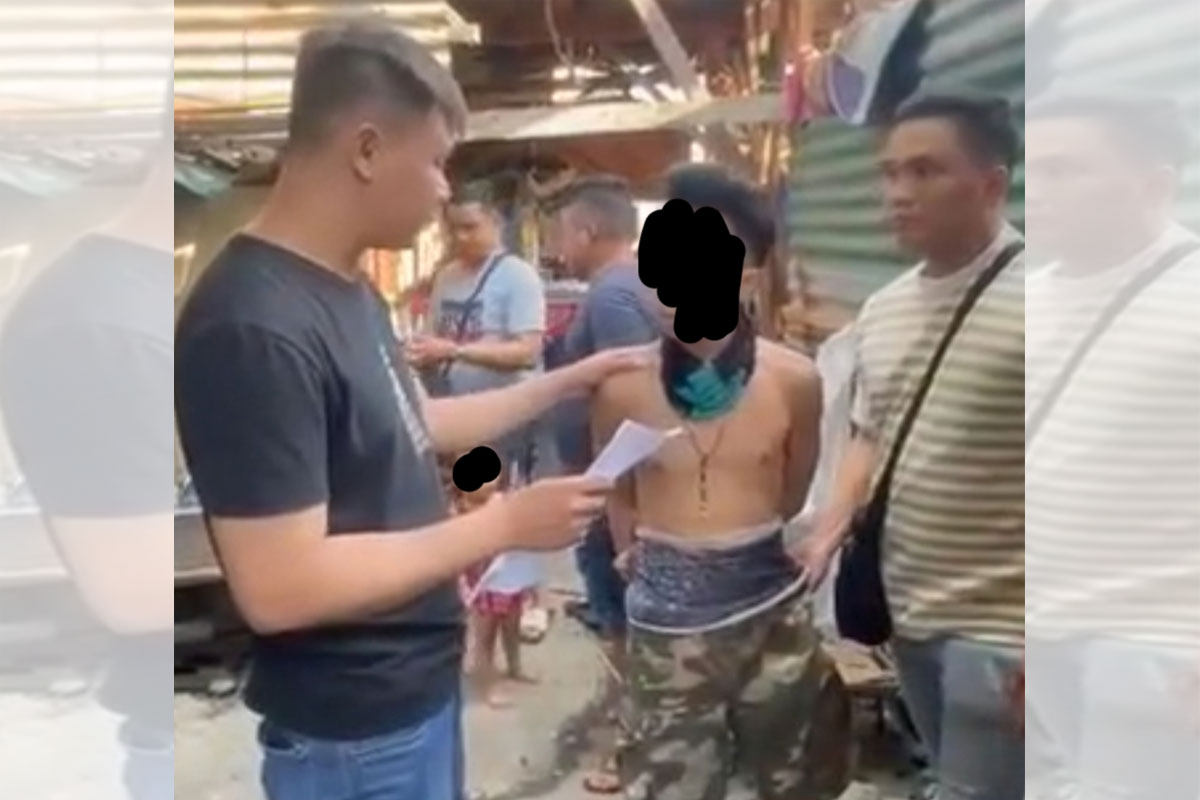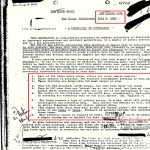
Firsthand Stories From People Who Went Undercover
Bridget Quinlivan
An undercover assignment is not as easy as movies like 21 Jump Street would have us believe. Trained professionals often have a hard time dealing with the difficult choices they have to make while on a job. They have to find ways to separate their undercover persona from who they are in the real world. It can be even worse when agents have to enter places like prisons and make alliances with the very people they arrested.
Undercover agents are the unsung heroes of law enforcement because if they do their jobs right, then we never know their names. Luckily, more stories like the ones below are coming to light.
________________________________________
• Photo: Clara Sipprell / Wikimedia Commons / CC0
 Civil Rights Leader Walter White Went Undercover As A White Man In The Jim Crow South
Civil Rights Leader Walter White Went Undercover As A White Man In The Jim Crow South
Born in Atlanta in 1893, Walter Francis White often put himself in dangerous situations for the sake of progress. As a young boy, White learned that his biracial background did not protect him from people’s bigotry.
I knew then who I was. I was a Negro, a human being with an invisible pigmentation which marked me a person to be hunted, hanged, abused, discriminated against, kept in poverty and ignorance in order that those whose skin was white would have readily at hand a proof of their superiority… Yet as a boy there in the darkness amid the tightening fright, I knew the inexplicable thing — that my skin was as white as the skin of those who were coming at me.
White would use that experience as motivation to advocate for racial justice across the US, but especially in the south. He opened a local chapter of the NAACP in Atlanta. NAACP Field Secretary James Weldon Johnson hired White as his assistant in the New York headquarters.
From New York, White launched several different investigations that took him to the deep south, where he impersonated a white man to find information for the NAACP. When he went undercover to investigate lynchings in Tennessee and Georgia, he found local townspeople boasting about the crimes in his presence (or directly to him), assuming he was white and therefore supportive of their actions.
As important as White’s work was, it was also incredibly dangerous. In 1919, White was undercover investigating the government-led massacre and imprisonment of Black sharecroppers in Elaine, AK. His plan was to use fake press credentials and pose as a Chicago Daily News reporter. He was set to meet the Sheriff one afternoon when a Black man approached him on the street. From White’s autobiography, A Man Called White,
He said under his breath… “Mister… I don’t know what you are down here for, but I just heard them talking about you — I mean the white folks — and they say they are going to get you…”
There were just two trains a day out… one which left in a few minutes… I sped down the railroad tracks, keeping out of sight as much as possible. Just as the train pulled in, I climbed aboard… The conductor looked at me quizzically when I offered payment of my fare in cash. I explained to him that I had important business in Memphis that evening and had not had time to buy a ticket. “But you’re leaving, mister, just when the fun is going to start…”
The conductor explained to White that there was a Black man impersonating a white man and that “the boys are going to get him.” White recalls, “No matter what the distance, I shall never take as long a train ride as that one seemed to be.”
The NAACP shared White’s investigative reports with media outlets, shining a light on the atrocities being committed against Black people. After his years as an investigator, White eventually led the NAACP, serving as its executive secretary from 1929 to 1955. Unfortunately, White died 10 years before the 1965 Civil Rights Act, but his contribution to racial justice cannot be overstated.
• Nail-biting story?
 • • • Photo: BBC / Google Earth
• • • Photo: BBC / Google Earth
Producers Robin Barnwell and Gesbeen Mohammad Used Footage From An Undercover Agent In Xinjiang To Expose China’s Digital Authoritarianism
According to a 2020 FRONTLINE PBS documentary, millions of Chinese Muslims have been imprisoned in detention camps in China’s Xinjiang region. Human rights organizations and other countries have accused China of committing genocide, as the imprisonment is occurring en masse to Uyghurs (a predominantly Muslim ethnic minority in China). The Chinese government calls the camps “vocational education and training centers.”
Documentary producers Robin Barnwell and Gesbeen Mohammed worked with an informant known as “Li” to go undercover and expose not only the human rights abuses happening at the camps, but the alarming surveillance methods used to track Uyghurs and other Muslims in the Xinjiang region. As a Han Chinese man (an ethnic majority in China) Li had more freedom to move throughout the region and attracted less suspicion. But once the investigation began, there would be no way to contact their undercover operant. As Mohammed explained,
With any undercover work, your priority is that they do their job safely but also that you get material back that you can use and make a film out of — otherwise the risk is for nothing… Once he was in Xinjiang, we had no control over anything, because without putting him at risk of being detected, we weren’t able to contact him about the film-making process.
When they finally were able to review the footage, they were surprised to see how much Li had been able to capture:
There were two bits of footage that stood out. One was his meeting with the security official, basically a local government official in Xinjiang. Clearly the meeting with him was quite revealing, because this official was saying, certainly for the first time I’ve heard on camera, that Uyghurs have no human rights. And that the policy, in the official’s view, was excessive.
And then, what was even more revealing was footage from inside one of the companies that is a key actor, helping the authorities in Xinjiang build the surveillance system, the Integrated Joint Operations Platform. “Li” had been able to visit the company, Leon Technology. [Him] being a Han Chinese businessman, they were relaxed around him and they were keen to boast about their capabilities. He was able to ask naïve questions and they gave quite bold answers.
The filmmakers described an alarming use of technology to control Uyghurs and Chinese Muslims:
Every Uyghur and Muslim in Xinjiang has to install this special app on their phone, which then monitors how you use your cellphone. Bar codes on people’s houses are able to tell the authorities who’s supposed to be in that house. There are travel restrictions on Uyghurs and other Muslims moving around Xinjiang. So, if you’re not authorized to go to a city, or if you’re moving from the countryside to the city, you will be stopped and questioned. Going through all of these checkpoints allows the authorities to keep track of you…
One of the concerning things about this surveillance police state is the behaviors that they look out for. The things that we deem absolutely normal, such as having WhatsApp on your phone, never mind religion. These normal behaviors can be deemed suspicious and flag you up in the system. Even things like turning your phone off is suspicious, because then they’re not able to monitor your phone. It’s impossible to even try to go off the surveillance radar for the evening, as it might lead to you being detained. It’s sort of a place where there’s no room to breathe or behave in ways that are natural.
The producers hope that their work will spread information to the world.
The idea that in the 21st century, there are around two million people who’ve been locked up and that there’s a part of the world where 13 million people from an ethnic group and religious group, Muslims in this case, are actually unable essentially to contact the outside world…
People talk about the 21st century as being China’s century, and it’s obviously a very important global economic power, but there are huge concerns about the Communist regime’s human rights abuses.
• Nail-biting story?
Amaryllis Fox Became One Of The CIA’s Youngest Recruits, Spending 8 Years Undercover Posing As An Art Dealer
At age 22, Amaryllis Fox became one of the youngest CIA recruits all time. She spent the better part of the next decade posing as an art dealer abroad, recruiting potential CIA sources and assets and trying to keep dangerous weapons out of terrorist hands. According to Fox, it was September 11, 2001 that influenced her line of work:
It completely shattered my universe. I wanted to understand what caused it and how it could have happened. So I set about writing an algorithm that took historical data and processed it to predict the next attack. And it got the attention of the CIA. And I worked with them for almost a decade as a field operative, keeping WMDs out of the hands of non-state actors, terror groups like Al-Qaeda and their affiliates around the world.
In her memoir, Life Undercover: Coming of Age in the CIA, Fox details her experience as a spy. She recalls the feeling of being “watched” when she was undercover with her husband in Shanghai, as her live-in housekeeper was an informant for the Chinese government:
The only way to handle being watched is to give the watchers nothing to see… We don’t talk about work. We don’t talk about anything of importance, briefed as we have been that our house is under surveillance, that even our housekeeper, a wraithlike presence named Ayi, works for Beijing, that we should have sex regularly, but not too regularly, keep it hot but not too hot…
Fox has also shared real spy tips and tricks that you won’t find in the movies, like using “Rolaids to make signal marks on bricks because it’s less incriminating than chalk, in case of capture and search,” or a method a colleague came up with of using Starbucks gift cards to signal a need for a meeting:
He gives one [gift card] to each of his assets and tells them, “If you need to see me, buy a coffee.” Then he checks the card numbers on a cybercafé computer each day, and if the balance on one is depleted, he knows he’s got a meeting.
While Fox reported film scenes of rooftop chases are unrealistic, as they would immediately have blown her cover, she said restaurant meet-ups are very real, and crucial:
Restaurants and cafés are in many ways the lifeblood of espionage… Restaurants offer the opportunity to meet the people we most seek — those with access to a government or terror group that might be able to help us predict or prevent the next attack. Sometimes those meetings are accidental. Mostly, they are planned to look accidental.
Back-to-the-wall is operational instinct to help with situational awareness and ensure the face of your conversation partner is turned away from onlookers in the room. Depending on the activity you have in mind, multiple entrances and exits can be helpful and private seating such as booths or hidden corners is a plus. There are also opening hours to consider, as many operational acts take place at unusual times of day. Perhaps most important of all, the presence of security cameras and the type of clientele that frequent the joint.
Fox no longer works for the CIA; she speaks around the world about peacekeeping. One thing she has repeatedly discussed is that building connections and relationships with potential sources is one of the key parts of the job – rather than heated confrontations or adopting an “us versus them” mentality.
It’s one of the most soulful, vulnerable moments two humans can share…These are the relationships that last decades, that end wars, that prevent attacks…that change history… everybody believes that they are the good guy.
• Nail-biting story?
 • • Photo: Federal Bureau of Investigation / Wikimedia Commons / Public domain
• • Photo: Federal Bureau of Investigation / Wikimedia Commons / Public domain
DHS Investigations Agent Jared Der-Yeghiayan Took Over An Admin Account On The Dark Web’s ‘Silk Road’
The Silk Road used to be a cybersecurity nightmare, an online marketplace where people could purchase anything from plastic skulls to a hitman. Until Department of Homeland Security (DHS) Agent Jared Der-Yeghiayan helped take down the site administrator in an undercover operation on the dark web.
After finding drugs at the Chicago airport, Der-Yeghiayan worked on tracking down offenders through the digital world. That led him to a deep dive into the philosophies of the site leader who called himself the Dread Pirate Roberts (DPR), after the Princess Bride character.
If we knew what inspired [DPR] we could talk to him, even engage him in an undercover capacity. Maybe he might spell something incorrectly, say something more about himself.
The investigation followed a couple low-level leads who dabbled in small drug deals; Der-Yeghiayan was eventually able to take over an account for someone in DPR’s inner circle known as “Nomad.”
If you took a username, or someone [the inner circle] didn’t know, they wouldn’t respond. You couldn’t get a lot of info. But what I noticed was, using the Nomad account I was getting a lot of info from these admins. In particular, one called Scout.
Der-Yeghiayan later was able to flip “Scout” to their side and took over her admin account, having to perfectly mimic her “writer’s voice, syntax, diction, punctuations, sentence structure, slang, curse words, acronyms.” Investigators were eventually able to use the admin account to track down the Silk Road’s servers, as well as an internet cafe in San Francisco where the site’s suspected leader was logging in.
After Der-Yeghiayan convinced the FBI not to use a helicopter to drop in on their suspect, Ross Ulbricht’s apartment; they followed him to a San Francisco library where they seized him and his laptop.
On the laptop we found an enormous amount of evidence… It was hard to decide what to produce at court. Detailed notes and journals of everything he did… Ransoms. Spreadsheets detailing every server, where they were at, admin logins, everything.
Ulbricht was sentenced to life without parole.
• Nail-biting story?
 • • Photo: Mannix123 / Wikimedia Commons / CC-BY-SA 3.0
• • Photo: Mannix123 / Wikimedia Commons / CC-BY-SA 3.0
Jay Dobyns Became A Patched Member of The Hells Angels
Jay Dobyns spent 20 years as an undercover agent for the ATF (Bureau of Alcohol, Tobacco, Firearms and Explosives). But his most famous case, and the one that ended his undercover career, involved the infamous Hells Angels motorcycle club. Dobyns posed as a debt-collecting biker, Bird, who wanted to join the notorious group. According to Dobyns,
The Hells Angels are misunderstood losers held together by hate and money… We hated all the other [motorcycle] clubs, the public, the police. We hated work, our wives, our girlfriends, our kids. Occasionally we hated ourselves. We hated everybody that wasn’t a Hells Angel, and even then we often hated each other. I say “we” because these were the people and things I had come to hate too.
Operation Black Biscuit forced Dobyns to fully commit to his role as Bird:
This was 21 months of daily, non-stop undercover work. The most damaging element of this case – physically, mentally, emotionally, spiritually – was the day-in, day-out challenge of playing that persona, pretending to be someone you’re not. There’s no second take…
While very aware of the club’s extreme violence, Dobyns was surprised to see the VIP treatment the American public showed the Hells Angels, and admitted that it’s easy to get swept up with the mythology surrounding the group:
There were some good guys, guys that I drank beer with and shot pool with… But you must never forget that these guys may not have university degrees but they do have PhDs in violence and intimidation, and heaven forbid that you insult them or the name of their club or the death-head patch they wear. Cynthia Garcia is proof that you’ll pay a brutal, lethal, violent price for that. She insulted them in their own house and they were her judge, jury and executioner…
Six weeks later those same guys were at a Hells Angels toy ride with teddy bears strapped to their motorcycles, to be delivered to kids in hospital. The public doesn’t see Cynthia Garcia being stomped to death, they just see Hells Angels delivering gifts to sick kids at Christmas. They are very good at propaganda.
Garcia had hung around the bikers and was murdered by the group after she spoke up about the way they were treating her. During his time undercover, Dobyns, too, said he came close to being executed after a member of another chapter, Chico, found him suspect. Dobyns had to stage a taped “execution” of a rival gang member to convince people he was the real deal.
After I’d been confronted by Chico, I was convinced they were gonna execute me… The odd part is that I was so tired and frustrated that I wanted them to. I was like, “I will never quit, but if you guys would just put a bullet in my head then all of this could just stop.” I’d lost perspective. It was an illogical position but my personal life was ruined, I was exhausted, I was eating diet pills by the dozen, I was overwhelmed and helpless.
By the end of his investigation, Dobyns earned a patch from the club, although they deny that it is official. Most of the Hells Angels that were arrested pleaded down their sentences. Dobyns and his family had to move several times after facing death threats, including their house being burned down. Dobyns said he would do it again, but “I would do it better.”
• Nail-biting story?
Private Investigator David Sullivan Infiltrated Cults To Expose the Psychological Methods Used By Their Leaders
After living on the road in the ’60s and seeing some of his friends’ experiences in America’s heyday of cults, David Sullivan became interested in how charismatic leaders could convince seemingly intelligent people to disconnect from their normal lives.
I became disturbed by how dramatically they transformed people, and in such a short period of time…They persuaded a lot of intelligent young people to drop out of college, f*ck up their whole career track, break up with their boyfriend or girlfriend, and go off to some retreat. Next thing you know, they’ve lost contact with their family, they’re scrubbing latrines with toothbrushes and liquidating their personal savings.
Sullivan became something of a cult private investigator. He was often hired by outside parties to gather information on a cult’s activities. Sometimes the goal was to extract a follower or gain evidence in legal cases. He also became something of an expert in how cult leaders operate:
Some of them come to believe their own bullsh*t — they almost have to in order to be convincing. But on a deeper level they know they’re full of sh*t. I say that because the guru’s teachings will always correspond with his desires. For example, if there is a pretty young convert, the Holy Spirits will always decide that she has been specially ordained to be the leader’s consort, whereas the homely, hardworking woman will always be reserved for one of his schmucks. It’s the same thing with money — the richest devotee is always considered the most devout…
Some leaders do make mistakes. They surround themselves with a small circle of sycophants and start to believe too much in their own powers. These are the ones, like David Koresh or Jim Jones, who are most likely to take everyone down with them in a grand extension of their narcissism… But the most powerful cults, like Scientology or est, don’t for a minute believe their own bullshit, at least not at the higher levels. The people in control know it’s a game of money and power.
As part of his work, Sullivan at times went undercover in the cults themselves. In one instance, Sullivan was investigating a Salt Lake City group called Impact Trainings, which holds “Harmony” seminars over the course of several days in windowless warehouses, where participants were publicly humiliated to the point of total psychological submission. Sullivan was hired for the job by a defense attorney in a murder case. She needed to convince one of the defendants to testify against the others by showing her that she’d been brainwashed. As described in a piece for Harper’s Magazine, Sullivan risked detection at the seminar when another member approached him for help:
“I chose you because I don’t think you’re like the others,” she whispered. “I think you’re a spy. Or maybe the police…”
“I don’t know what you’re talking about,” he said. “You got me all wrong —”
“You have to get me out of here.”
“What?”
“Please. You’re the only hope I have left…”
“I was forced to come here,” the woman continued. “I had cancer. My fiancé left me. My boss took over my life. He told me that I had to attend the training. But I can’t take it anymore.”
Sullivan was able to create a distraction to allow the woman to escape, but had to endure a “Humiliation Box” and increased suspicion from the group’s enforcers as a result. Sullivan passed in 2013, but helped many former cult members and their loved ones escape from dangerous situations.
• Nail-biting story?
 • • Photo: Mzuriana / Flickr / CC-BY-SA 2.0
• • Photo: Mzuriana / Flickr / CC-BY-SA 2.0
In 1979, Ron Stallworth, A Black Colorado Springs Police Officer, Infiltrated The KKK
In 1978, Ron Stallworth wrote a letter in response to an ad in the paper from Ken O’Dell, a member of the Ku Klux Klan looking for new recruits. O’Dell called Stallworth and the two began a relationship. What O’Dell didn’t know at the time was that Stallworth was actually an undercover police officer – the only Black officer at the Colorado Springs department.
While it wasn’t initially intended to become a sting operation, through letters and phone calls, Stallworth started gaining O’Dell’s trust and infiltrating the local KKK chapter. Stallworth recalls,
Fortunately the people I was dealing with weren’t the brightest bulbs in the socket… It was so hilariously funny that this was even taking place. But funny as it was, it was an investigation that we took seriously – because the Klan’s intent was very serious.
For any in-person meet-ups, one of Stallworth’s colleagues, Chuck, would pose as him, earning him the nickname “White Ron.” The real Stallworth would follow with another colleague and listen to the goings on through a wire that Chuck wore. Stallworth says the double Rons only once came close to being caught:
Chuck had been to a meeting with the Klan members and there had been something I wanted to follow up on so, a couple of hours after Chuck left the meeting, I called Ken. He immediately said:
“What’s wrong with your voice?” So I coughed a bit and said I had a sinus infection. Ken proceeded to prescribe me a remedy. He said: “I get those all the time.”
Stallworth’s work eventually even led to him carrying on phone conversations with the Klan’s newly appointed Grand Wizard (leader), David Duke. Speaking of Duke, Stallworth told The Guardian,
Duke was a con artist… His appearance was that of an all-American boy every mother would want as a prom date for her daughter… [He’s] a very pleasant conversationalist…
I laugh all the time about our investigation, especially about making a fool of David Duke, who likes to think I don’t have the intelligence of an ape because he thinks I’m genetically inferior… How
I conned the Grand Wizard, David Duke, and his coterie of followers… It has defined me in ways I never could have imagined.
The investigation ended in 1979, after Stallworth was unexpectedly nominated for a local leadership position. During its course, he uncovered numerous violent plots the KKK intended to carry out, including a bomb plot against a gay bar. Chuck and Stallworth also exposed army personnel who belonged to the Klan and where the group kept its money.
Stallworth came forward with his story when he retired in 2006, which resulted in his name popping up on supremacist websites. Despite the dangers, Stallworth said he “got a lot of joy from telling my story,” which was adapted into the 2018 Spike Lee film, BlacKkKlansman.
• Nail-biting story?
 • • Photo: United States Federal Bureau of Investigation / Wikimedia Commons / Public domain
• • Photo: United States Federal Bureau of Investigation / Wikimedia Commons / Public domain
Joe Pistone Spent Six Years Infiltrating The Mafia As ‘Donnie Brasco’
Joe Pistone started his undercover work for the FBI as jewel thief “Donnie Brasco” in 1976. He lived as Brasco until 1981, infiltrating the highest echelon of the New York Mafia. Of his Donnie Brasco persona, Pistone said,
I wanted him to be a guy that was a street-smart, street-wise kid the wiseguys would take to and not question too much about his background or his abilities to do what he said he could do.
Pistone’s main contact was Benjamin “Lefty Guns” Ruggiero. He described “Lefty” as “the ultimate wiseguy.”
Once I got to know Lefty pretty good and he got to the point where he trusted me and would talk around me and take me into his confidence regarding the Mafia business and who was who and what was going on, he got the impression that I had the ability to make a lot of money for him.
Ruggiero introduced Pistone to the Bonanno crime family in 1977. Over the next four years, Pistone gathered intel on organized crime spanning from Milwaukee to Florida, even convincing Ruggiero to purchase a Florida nightclub called Knights Court where the FBI had installed listening devices.
While Pistone wanted to stay undercover until he was a made man, the Bonanno family was enduring a civil war and the FBI decided Pistone’s position was too risky. In the end, over 120 Mafia members were arrested and sentenced. Pistone wrote a book that eventually became a film, Donnie Brasco, starring Johnny Depp. Of his experience, Pistone said,
I had no sense of guilt. All during the course of the operation, I knew it was a job.
• Nail-biting story?
 • • Photo: Unknown author / Wikimedia Commons / Public domain
• • Photo: Unknown author / Wikimedia Commons / Public domain
Ken Croke Found He Had To Get His Hands Dirty When He Went Undercover With The Pagans Motorcycle Club
Ken Croke started his career with the Bureau of Alcohol, Tobacco, Firearms and Explosives (ATF) in 1990, but his biggest job came in 2008 when he became the first federal agent to go undercover in the Pagans Motorcycle Club:
Every day living with those guys was a mindf*ck, especially when I was a prospect [a prospective member]. Every day I woke up, I wondered what sort of shit was going to happen. Would I have to jump into a barroom brawl? Would I be faced with a pile of coke and a choice? What sort of dumb shit would they ask me to do? I always had to expect the unexpected and could never let my guard down.
Croke chronicled his undercover experience in his book Riding with Evil. In it, he describes that he never knew what his day-to-day would be or how he would navigate a given situation while maintaining his cover.
There’s certain things that I can’t do. There’s certain things that I can’t be a part of. There’s certain things that I will have to stop. There was a night we went to kill somebody; we were going to stab this person and throw them off a roof. That can’t happen and so how am I going to get out of that?
You have to go along with these things knowing that at any moment it could be too far and there are limits. There’s legally things that I could not do and I would have to stop it. There’s also morally things: they’re a white supremacist group and I was not going to participate in a lot of their white supremacy activities.
Once the operation wrapped up, Croke had to meet with a psychiatrist to make sure he had not succumbed to the gang’s worldview. Croke’s work led to more than 20 Pagans arrested on charges including racketeering, murder conspiracy, extortion, drug trafficking, assault and weapons violations, leading to combined prison sentences of over 100 years.
• Nail-biting story?
 • • Photo: H. J. Myers / Wikimedia Commons / Public domain
• • Photo: H. J. Myers / Wikimedia Commons / Public domain
In 1887, ‘Girl Detective’ Nellie Bly Exposed Abuses in a New York City Insane Asylum While Pioneering A Path For Women In Newspapers
In 1887, at the suggestion of her editor, investigative journalist Nellie Bly was committed to Blackwell’s Island asylum in New York City. Bly went undercover as Nellie Brown, since the initials would match any personalized items and it was close enough to her own name that she would remember it.
Bly worked hard to fulfill her role; she got a room in a boarding house and started acting erratically. She eventually was taken into court by police, where she claimed to be a Cuban immigrant with amnesia. She was first placed in Bellevue Hospital. Bly recalls of her first night:
All night long the nurses read one to the other aloud, and I know that the other patients, as well as myself, were unable to sleep. Every half-hour or hour they would walk heavily down the halls, their boot-heels resounding like the march of a private of dragoons, and take a look at every patient. Of course this helped to keep us awake… Occasional yells and cries came from the male department, and that did not aid in making the night pass more cheerfully. Then the ambulance-gong, as it brought in more unfortunates, sounded as a knell to life and liberty.
She eventually made her way to Blackwell’s Island, but her circumstances did not improve.
Every door is locked separately and the windows are heavily barred, so that escape is impossible. In the one building alone there are, I think Dr. Ingram told me, some three hundred women. They are locked, one to ten to a room. It is impossible to get out unless these doors are unlocked. A fire is not improbable, but one of the most likely occurrences. Should the building burn, the jailers or nurses would never think of releasing their crazy patients… As I say, in case of fire, not a dozen women could escape. All would be left to roast to death… Unless there is a change there will some day be a tale of horror never equaled.
These conditions, coupled with the beatings and drug overdoses administered by nurses would make anybody question their sanity, Bly concluded.
Take a perfectly sane and healthy woman shut her up and make her sit from 6 a.m. to 8 p.m. on straight-back benches, do not allow her to talk or move during these hours . . . give her bad food and harsh treatment, and see how long it will take to make her insane. Two months would make her a mental and physical wreck.
After 10 days in the asylum, lawyers petitioned New York for her release. Her first article was published two days after she got home. Her work launched an investigation and the eventual $1 million bump to the asylum’s budget. Bly would go on to make more of a name for herself as a journalistic “stunt girl.”
• Nail-biting story?
 See what is ranked #1
See what is ranked #1
The Actual Origin Of Everyday Clothing
A Pair of Reporters Went Undercover As Refugees Seeking Asylum To Be Smuggled From Indonesia To Christmas Island
Two journalists based in Afghanistan, Luke Mogelson and Joel van Houdt, went undercover as asylum seekers in 2013. Mogelson and van Houdt traveled from Indonesia to the Australian territory of Christmas Island, a popular but dangerous route for many refugees from the Middle East. In Mogelson’s article of the experience, he writes that over 1,000 asylum seekers have likely drowned en route in the previous decade.
Despite the danger of their journey, Mogelson and van Houdt boarded a 30 feet timber boat in Jakarta that was “clearly not designed for passengers.” They paid a combined $8,000 and took the journey alongside two Indonesian crew members and 55 other passengers, including nine children and a woman seven months pregnant. According to Mogelson,
It’s surprisingly simple, from Kabul, to enlist the services of the smugglers Australian authorities are so keen to apprehend. The problem was that every Afghan I spoke to who had been to Indonesia insisted that no Western journalist would ever be allowed onto a boat: Paranoia over agents was too high.
To mask their true identities, Mogelson and van Houdt posed as Georgian refugees fleeing with sensitive government information. The trip was not easy nor comfortable:
At times we seemed to make no headway whatsoever against the strong south-easterly trade winds, which whipped up white caps on the waves and kept us all alert with stinging gusts of spray
There was no toilet and absent any railing to hold on to, going over the side was too risky. The men urinated on the hull, the women in their pants.
Once they neared their destination, a crew member used a satellite phone to call Australian authorities for help, then instructing the refugees to dump their identifying documents and phones to avoid deportation. Australian sailors escorted the boat to land.
Upon arrival, Mogelson and van Houdt revealed their identities and were taken to a hotel. The asylum-seekers, however, faced a long and uncertain road. Mogelson said eventually they were likely sent to detention centers in Nauru and Papua New Guinea as they waited to have their refugee claims processed – many of these claims are rejected.
• Nail-biting story?
A German Reporter Spent 15 Years Secretly Filming Neo-Nazi Rock Concerts Around Europe
Where is the best place to find neo-Nazis? According to journalist “Thomas Kuban,” it’s at a fascist punk rock concert. Kuban, who spent 15 years going undercover at such concerts, used a pseudonym in fear for his life. “If I had been caught, the neo-Nazis would have beaten and kicked me — they might well have killed me.”
After being tipped off to the concerts in the 1990s, Kuban worked to infiltrate the punk rock scene and publicly expose the still-active hate group:
Mass crimes take place at every event and no one does anything… I am shocked at how weakly the security services deal with the neo-Nazis in Germany, allowing them a legal vacuum in which to operate.
Despite his decades undercover, it seemed the German media wasn’t interested in publishing what Kuban had found. When he eventually published footage on several German news sites, Spiegel and Stern, in 2003, the concert-goers were outraged. As Kuban says “This bastion in which the neo-Nazis had felt completely safe at these secret concerts had been broken down.” They started trying to tighten security and find the infiltrator, threatening him with death:
The camera had to be well hidden and my false identity so elaborate that no suspicions would be raised… otherwise the fear would have been too much and I wouldn’t have been able to go in…
All the time they were looking for that camera… I was almost caught out by a metal detector once, in Italy in 2006. There was a body search first, then you were allowed a few meters onto the site, and then there was a metal detector after that. I was scared, of course, I didn’t know there’d be a metal detector and then suddenly I was facing one.
After a documentary and a book about his work continued to produce disappointing results, Kuban decided to put his camera away. “It was the hardest decision I ever made… It’s clear to me that there’s so much more to investigate.”
• Nail-biting story?
 • • Photo: Colombian National Police / Wikimedia Commons / Public domain
• • Photo: Colombian National Police / Wikimedia Commons / Public domain
An IRS Agent Posed As A Money Launderer For Pablo Escobar’s Cartel
Robert Mazur worked for the Internal Revenue Service (IRS) and the Drug Enforcement Agency (DEA) and his story is being turned into a Hollywood movie. For two years in the 1980s, he posed as a money laundering businessman to infiltrate Pablo Escobar’s drug cartel.
My role was to come across to the cartel as a credible money launderer… Well, in order to do that, I had to be embedded in real businesses. So, over a period of 18 months, we put the undercover operation together. I used informants and concerned businessmen to get into real businesses.
The agencies called Mazur’s operation, C-Chase for currency chase. Mazur said, “You can launder money so many different ways. It’s as unique as snowflakes.” The money moved around a lot in different countries and banks – a move called “layering.”
These were off-book loans so that you couldn’t directly tie it to the capital that was sitting in Luxembourg. The money would then be moved through two or three other offshore jurisdictions, ultimately into Panama, where it was placed into an account, from which we made payouts to the cartel, who received those funds into other Panamanian accounts at different banks that were in nominee names.
Mazur’s investigation led to the arrest and conviction of more than 100 drug operatives and bankers. More than 3,100 pounds of cocaine were seized and more than $600 million in fines and forfeitures as a result of C-Chase.
Weid history@ ranker.com





















